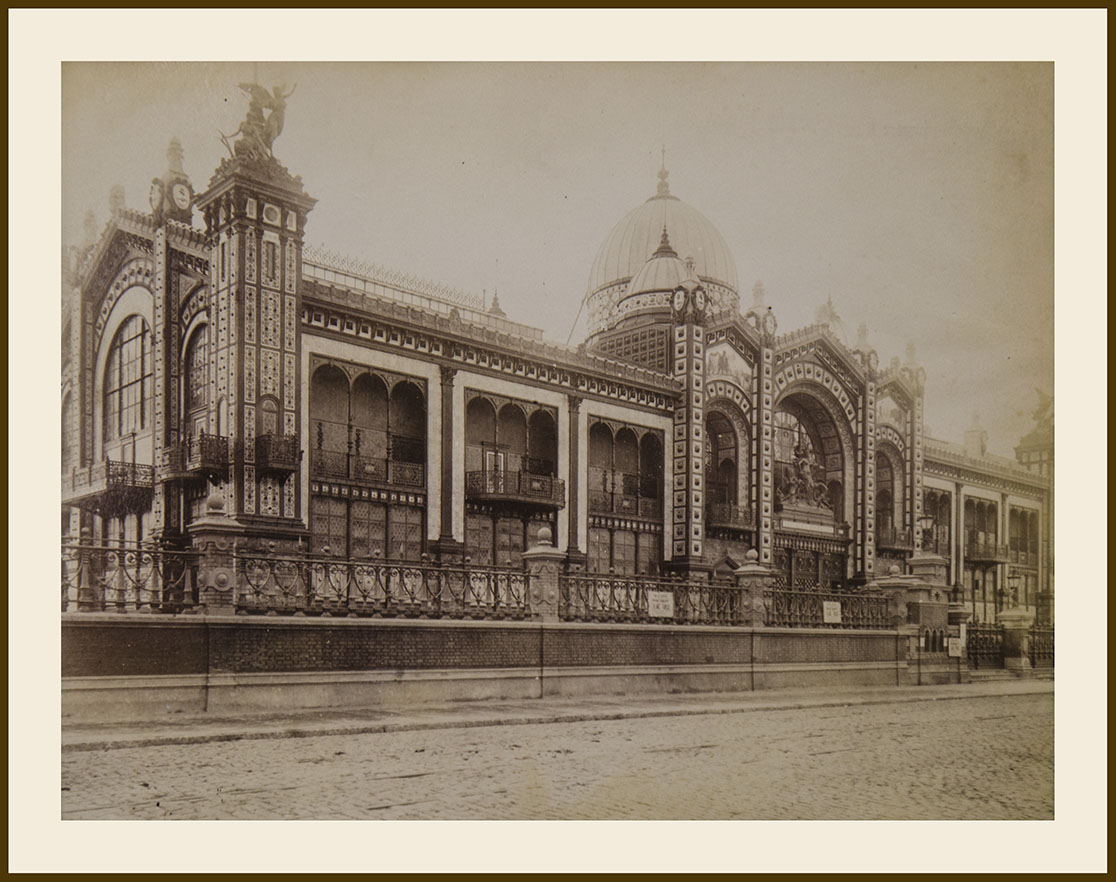YESTERDAY'S WONDER
Argentine Pavilion. Unidentified photographer
Vintage photograph, mounted on an old cardboard. Measurements: 16.7 x 22 cm. It is displayed framed.
The Argentine Pavilion was one of the most interesting monumental buildings in the city of Buenos Aires from the 1890s until its unfortunate demolition in the 1930s. Its history full of ups and downs tells us that it was built in France by the Parisian architect Albertt Ballu to represent the then opulent Argentine Republic during the famous Universal Exhibition in Paris in 1889 -in commemoration of the centenary of the French Revolution- and, its design and beauty, won the first prize of the foreign pavilions of that fair. Located in the vicinity of the Eiffel Tower, that building built in an eclectic style in a novel combination of iron, majolica and glass, was the venue for the exhibition of various Argentine products in front of millions of visitors and, among its greatest attractions, stood out the exhibition of 50 large photographs of the Common Schools of Buenos Aires made by the talented Samuel Boote (1844-1921).
The National State made it a requirement that the building be of the collapsible type for its subsequent transfer to the country and that is what happened, settling in Plaza San Martín to the wonder of the people of Buenos Aires in front of a sui generis building and where its high domes and the four eye-catching sculptures, the work of artist Louis-Ernest Barrias.
During its stay for more than three decades, that "Argentine Pavilion" of 1600 m2 with its unmistakable silhouette of 30 meters high on Calle Arenales 657 between Florida and Maipú, was the venue for various cultural initiatives, such as the National Exhibition of 1898; two years later, the headquarters of the Argentine Products Museum of the Argentine Industrial Union; in 1910, the venue for the Fine Arts Exhibition when the Centennial celebrations took place. And finally, the headquarters of the National Museum of Fine Arts until its definitive demolition around 1933. Today of that glorious architectural past, only the four sculptural groups scattered in different Buenos Aires neighborhoods survive. Of course, such a building structure, so closely linked to culture, was a matter of interest to numerous photographers, such as Samuel and Arturo Boote, Samuel Rimathé or Harry Grant Olds, just to mention a few camera professionals.
Abel Alexander
President of the Ibero-American Society for the History of Photography
We appreciate the information provided by Roberto Conde.
| AUTHOR | FOTÓGRAFO NO IDENTIFICADO |
|---|
Are you interested in selling some works?
Send us an email briefly indicating
which works you intend to put on sale, and we will respond. click here
Subscribe to our newsletter to be updated.
Check our Newsletters